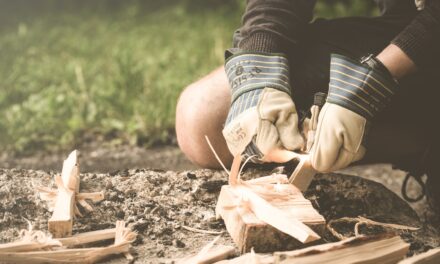When disaster strikes, having a well-prepared emergency kit can make a significant difference in your safety and survival. Emergency kits should be tailored to meet the needs of your household for a variety of situations, whether you’re dealing with natural disasters, power outages, or other unforeseen events. This guide will provide a comprehensive checklist of essential items to include in your emergency kit, ensuring you are prepared for the worst at all times.
An effective emergency kit is more than just a collection of items; it’s a proactive approach to preparedness. By assembling a range of supplies that can help you and your loved ones endure an emergency with greater security and comfort, you can significantly reduce the stress and danger associated with disasters. Each item in your kit should serve a specific purpose or meet a particular need that may arise during an emergency.
In this article, we will outline the critical components that every emergency kit should contain. From food and water to first aid supplies and communication tools, each element plays a vital role in enhancing your readiness. We’ll also discuss how to customize your kit based on your geographic location, personal needs, and the types of disasters most likely to occur in your area.
Join us as we explore the essential items for your emergency kit, offering detailed explanations of their importance and tips on how to best utilize and maintain your supplies. Whether you are starting your first kit or looking to update an existing one, this guide will help ensure you have everything you need to face emergencies confidently.
Continuing with the in-depth explanations about assembling an emergency kit:
Detailed Checklist for Your Emergency Kit
Basic Supplies
At the core of any emergency kit are the basic supplies that sustain life and safety. Here’s what you need:
- Water: One gallon per person per day for at least three days, for drinking and sanitation.
- Food: A minimum three-day supply of non-perishable food items that are easy to prepare, such as canned goods, energy bars, dried fruits, and nuts.
- Battery-powered or hand crank radio: To stay informed with weather updates and emergency information. Consider a NOAA Weather Radio with tone alert.
- Flashlight: Preferably one for each member of the household, with extra batteries.
- First aid kit: Should include a variety of bandages, antiseptic, antibiotic ointment, and over-the-counter medications like pain relievers and anti-diarrhea medication.
- Extra batteries: Various sizes to match the devices you’ve included in your kit.
- Whistle: To signal for help if needed.
- Dust mask: To help filter contaminated air and plastic sheeting and duct tape to shelter-in-place.
- Moist towelettes, garbage bags, and plastic ties: For personal sanitation.
- Wrench or pliers: To turn off utilities if necessary.
- Manual can opener: For food if kit contains canned goods.
- Local maps: In case digital navigation resources are unavailable.
Personal Needs
While the basic supplies are essential, personalizing your kit can make a substantial difference in an emergency:
- Medications: A seven-day supply of prescription medications and medical items (hearing aids with extra batteries, glasses, contact lenses, syringes, etc.).
- Important documents: Copies of insurance policies, identification, and bank account records in a waterproof, portable container.
- Cash: In small denominations and coins. ATMs and credit card readers may not be operational.
- Emergency contact information: Including a family communication plan that everyone understands.
- Sleeping bag or warm blanket: For each person, consider additional bedding if you live in a cold-weather climate.
- Complete change of clothing: Include a long sleeve shirt, long pants, and sturdy shoes. Consider additional clothing if you live in a cold-weather climate.
- Chlorine bleach and medicine dropper: When diluted, bleach can be used as a disinfectant or to treat water (9 parts water to 1 part bleach).
- Fire extinguisher: Ideal for quickly dealing with small fires.
- Matches in a waterproof container: Essential for cooking or warmth, should be stored safely.
- Personal hygiene items: Such as feminine supplies, personal hygiene wipes, and toothpaste.
- Activities for children: Books, games, puzzles, or other activities for children.
Customizing Your Kit for Specific Needs
Consider the specific needs of your household members including pets, infants, and elderly individuals. Adapt your kit to the unique challenges you may face if you live in a region prone to specific types of natural disasters like hurricanes, earthquakes, or tornadoes. Remember, the key to effective preparedness is ensuring your emergency kit evolves as your needs change and new products become available.
Regularly review and update your emergency kit. Check expiration dates on food, water, medicine, and batteries, and replace any items that have expired or been used. Practice using the items in your emergency kit to ensure you know how to use them during an actual emergency.
Conclusion: Ensuring Readiness with a Well-Stocked Emergency Kit
Creating and maintaining an emergency kit is an essential step in preparing for the unexpected. Whether facing a natural disaster, a power outage, or another emergency, the items you’ve gathered can help protect your health, safety, and comfort. An effective emergency kit is comprehensive, covering basic needs like food and water, while also addressing personal and localized requirements.
Key Takeaways for Optimizing Your Emergency Preparedness:
- Comprehensiveness: Your kit should include supplies to cover the basic needs of all household members for at least three days.
- Personalization: Tailor your emergency kit to the specific needs of your household, considering all unique requirements such as medications, dietary restrictions, and personal documents.
- Maintenance: Regularly check and update your emergency kit. Replace expired items and replenish used supplies to keep your kit ready at all times.
- Practice: Familiarize yourself and your family with the contents of the kit and practice how to use them. Regular drills can enhance your ability to respond efficiently during an emergency.
- Accessibility: Store your kit in a location known to all family members and ensure it is easily accessible during an emergency.
By following these guidelines, you can ensure that your emergency kit is a reliable resource in times of need. Preparing for the worst doesn’t have to be daunting; with a well-planned emergency kit, you can face potential disasters with confidence, knowing you are ready to handle whatever comes your way.








